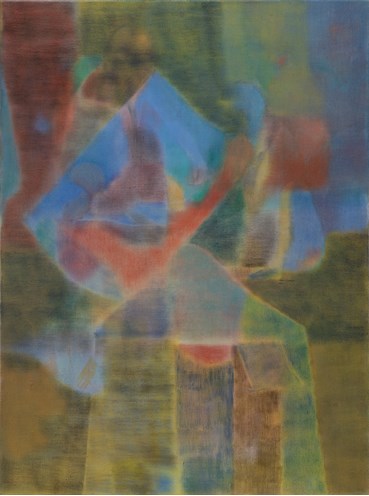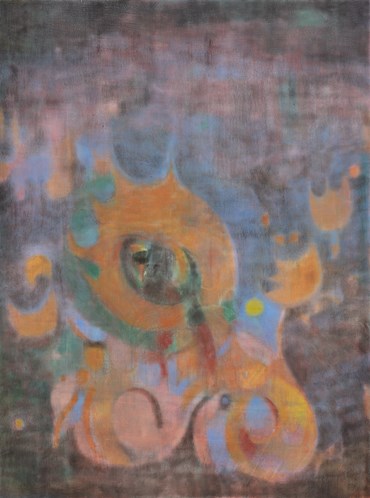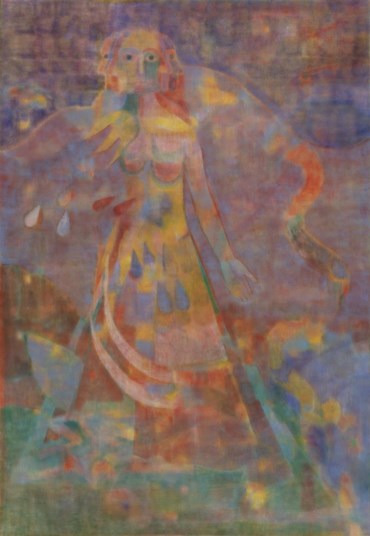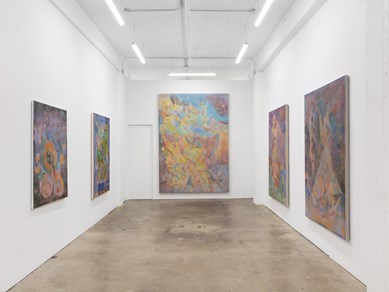17 Sep - 15 Oct, 2022

Statement:
For her second solo exhibition at Franz Kaka, artist Azadeh Elmizadeh presents a series of eight paintings centred around two ancient Persian mythological characters—sisters— who have travelled through generations and across geographical divides, appearing in an array of ancient texts such as the pre-Islamic Zoroastrian text, Avesta, the lost book Hezar Afsan, the Modern Persian epic entitled Shahnameh (Persian Book of Kings) by poet Ferdowsi, as well as in the renowned One Thousand and One Nights. Most famously, the siblings are known as Shahrzad (Scheherazade) and her younger sister Dinazad in this latter text. As the story goes, aided by her sister, Shahrzad is known to escape execution at the hands of her dreadful husband, King Shahryar, by cleverly reciting stories to him night after night, and ending each story on enticing cliffhangers which leaves him longing for more of her storytelling.///
In her quintessential atmospheric style, Elmizadeh conjures the ghosts of these two characters and captures narrative motifs from several of the texts in which they appear, embracing a rhizomatic approach to their representation. The artist plays with the fluid nature of oral histories and their mutable quality, which can also be attributed to the emancipatory metanarrative associated with the two sisters and their relationship to storytelling itself. On a third level, the materiality of paint and the process of painting echo this representational agency of transforming and shaping matter openly, leaving space for a plurality of readings and meanings.
Two of Elmizadeh’s larger paintings in this exhibition titled From the Soil (2022) and From the Water (2022) are speculative figurations of the sisters, based on their names in the Avesta, where they appear as Sanghavak and Arnavak. The artist draws from extensive research on the myth by the playwright Bahram Beyzaie, notably in his books Seeking the Roots of the Old Tree and Where Is Hezar Afsan, where he deconstructs the etymological roots of the sisters' names in an attempt to deduce more information about who they are and what they represent. “Sangh” means heavy and is associated with soil, and “Aren” means soft and is linked to water, while “Vak” signifies voice and speech and is associated with the ancient Indian Rig Veda goddess at the root of these two beings, their mother figure. The painting Mother (Oracle) (2022) references this archetypal figure, who is represented as a talking tree that predicts the future in the Shahnameh.
In Sister Seeds, Elmizadeh goes beyond narrative figuration and questions the function of this myth as an allegory about the region from which it emerged. She foregrounds the importance of agriculture and climate in ancient Iranian mythology. These stories were created as a response to the arid climate of the region, known for its harsh periods of drought. The symbolism surrounding these sisters connects the cycles of growth and harvest of crops to lore and traditions.
- Mojeanne Behzadi, 2022














